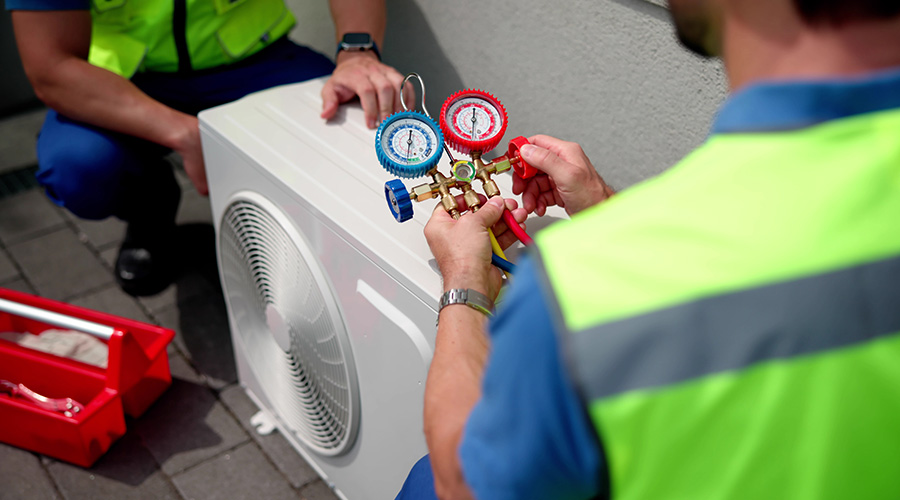Reaching milestones has been stressed upon people since they were born. For years, parents watch their children learn how to walk, talk, go off to school, mentally checking off each milestone they meet. However, there might be some milestones that people aren’t excited to reach.
As the Baby Boomer generation ages, the discussion of moving into senior living communities is coming up more often. Families want to ensure that their families are going to a safe facility, leading designers to prioritize safety features. Healthcare Facilities Today recently spoke with David Banta, partner senior housing practice leader, BKV Group and Grant Warner, senior housing practice leader, BKV Group on what safety features need to be considered when building new senior living communities.
HFT: What building codes and safety regulations should be prioritized for senior care facilities?
GW: Active Adult and Independent Living are generally regulated at the local level, by local or county building codes. Some local authorities adopt a statewide building code by reference. Most acute types of senior living, like Assisted Living, Memory Support, Long Term Care, Rehabilitation and Hospice care, must comply with those same requirements but also conform to State licensing requirements – which often reflect some Federal requirements. Most of these use various editions of the National Fire Protection Association (NFPA) 101 Life Safety Code. In addition, the Facilities Guidelines Institute (FGI) Standards may have been adopted by reference by an Authority Having Jurisdiction (AHJ).
HFT: What fire safety measures should be integrated into the design?
GW: Smoke compartmentalization is always helpful, even in active adult and independent living settings where they may not be required by code. Some residents are choosing to age-in-place, so compartmentalization can help protect them as their abilities decline. This can also be helpful in states that classify assisted living as a residential occupancy, not institutional.
Related Content: Senior Living Facilities for the Baby Boomer Generation
Widening exit stairwells beyond code minimums (from 44 inches between stringers to 48 inches clear width between handrails) to enable two helpers to assist a person more comfortably and quickly on each side in an evacuation can improve safety for everyone. Elevators can also be equipped for and designated as an “accessible means of egress” to assist in improving safety.
HFT: What design elements help reduce the risk of falls?
GW: Clear contrast between floor and wall surfaces, accentuated with another contrasting color for the wall base, can help with spatial orientation and reduce the risk of falls. Handrails, even in housing types where they may not be required by State Licensing codes, are helpful. Newer technologies, such as Viconic Fall Defense, can be added as a subfloor cushion under most types of flooring surfaces to reduce injuries when falls occur.
HFT: What considerations should be made for hallway width, handrails, and wayfinding?
GW: Wayfinding simplicity is becoming more and more critical – especially as more seniors living with some form of dementia, or even more than one type. Simple large high contrast room numbers to help them find their own apartment. Themed signage is also helping, perhaps recalling local coffee shops and bookstores.
Gentle misdirection is also becoming beneficial where we use “Sorry We’re Closed” signs at memory support secure doors designed to look like a simple shop or Post Office to try and avoid more heavy-handed signage and equipment that draws a resident’s attention and exacerbates their frustrations.
Handrails are becoming more and more important even in independent living and assisted living as more seniors strive to age-in-place. Even as their abilities decline.
DB: Other forms of wayfinding that are effective is a color dedicated to a particular area as an identifier, artwork or a unique piece of furniture can also act as wayfinding to assist a resident in recognizing that they are on the right floor or area of the building where their unit is located.
Mackenna Moralez is the associate editor of the facilities market and the host of the Facilities in Focus podcast.

 Skill Stacking: How Micro-Credentials Are Reshaping Trades
Skill Stacking: How Micro-Credentials Are Reshaping Trades Prima Medicine Opens New Location in Tysons, Virginia
Prima Medicine Opens New Location in Tysons, Virginia Anchorage Neighborhood Health Center Ensnared in Cyberattack
Anchorage Neighborhood Health Center Ensnared in Cyberattack Healthcare Real Estate: Responding to Shifting Patient Demands
Healthcare Real Estate: Responding to Shifting Patient Demands Over 40% of Workers Impacted by Seasonal Depression
Over 40% of Workers Impacted by Seasonal Depression